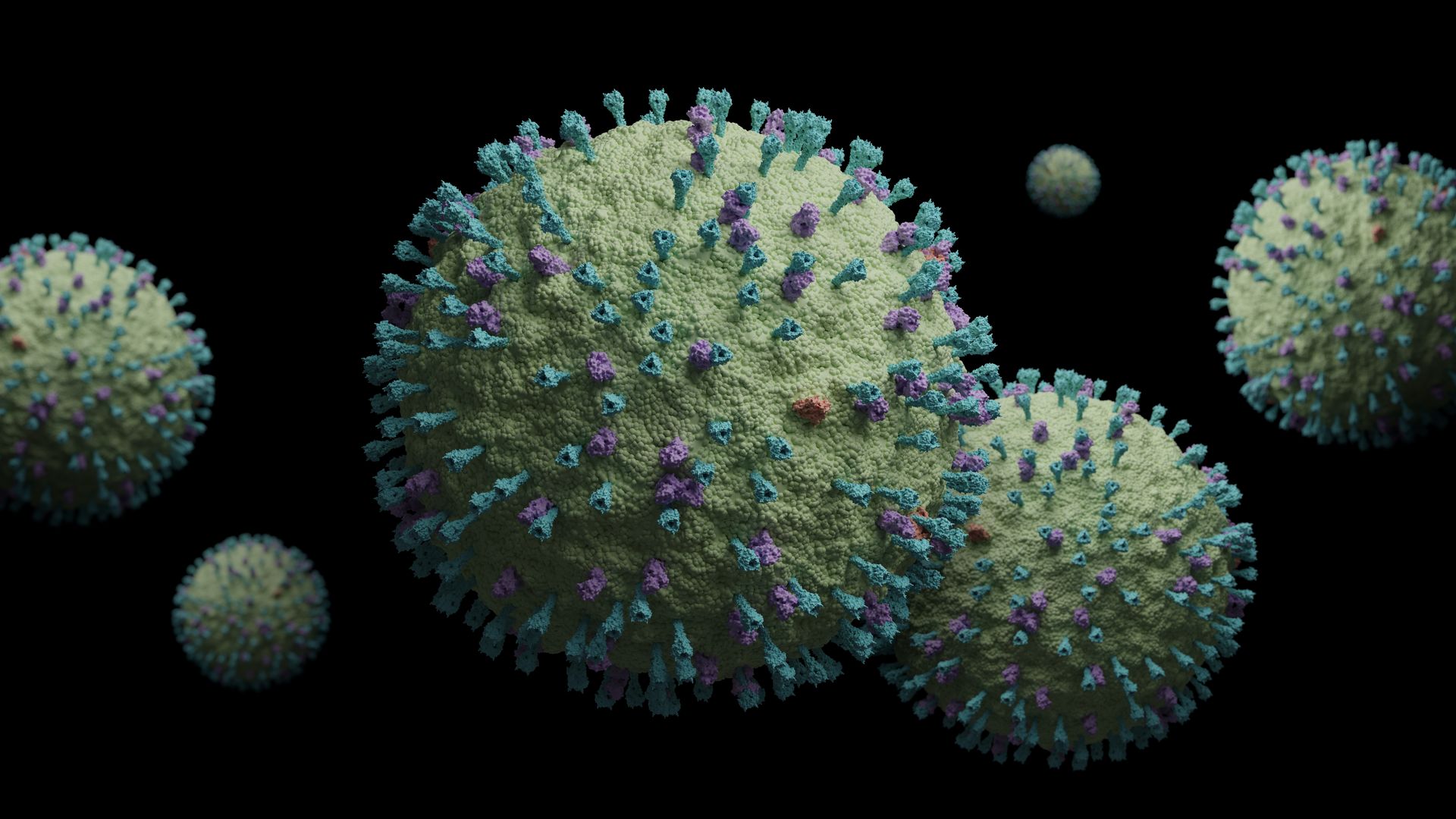What are the biggest viral health threats for 2025?
There's been a flurry of media interest about new, current and evolving viruses for 2025, including some disturbing reports about bird flu in Canada, Mongolia and the USA. In this post we take a look at the viral health threats we may face in 2025, and reveal how to stay safe from them.
The winter norovirus season gets off to a horrible start
The media reports on an '80 per cent rise' in severe illness that leaves people feeling totally wiped out, and experts are wondering whether a new antigen might be behind the surge. If so it won't be the only virus to skyrocket this winter, adding to the already heavy burden of flu, regular norovirus, RSV and Covid.
There are worries that norovirus in particular might have become more severe, especially since some counties have seen a dramatic increase in norovirus infections. If the new antigen makes it easier for the virus to spread, leads to a more serious illness or both, it could explain the sharp increase in cases. So far we do know that this winter's norovirus seems to be making people more ill than usual, with some GPs seeing entire families out of action because of it and others hospitalised because of dehydration.
New HMPV outbreak hits China
Human Metapneumovirus is very like a common cold, with coughs and wheezes, a runny nose and a sore throat. Like the common cold, most of the time it's mild but it can be serious in small children, people with weak immune systems and those over 65. Now we're seeing a new HMPV virus outbreak in China, whose symptoms are a bit different.
Social media reports from China suggest hospitals are being overwhelmed and crematoriums are full thanks to the outbreak, adding to the country's current winter outbreaks of influenza A, Mycoplasma pneumoniae and Covid. Some say they're on the brink of declaring a health emergency. So far there's no vaccine for HMPV.
This year's flu virus is a particularly nasty one
The 2024-25 flu season is by all accounts a nasty one. One UK Health Security Agency report from late 2024 says flu had already increased compared to the previous season and was circulating at high levels. No wonder more than 4000 of us spent Christmas Day in hospital with flu, and so many others took such a long time to recover.
It's partly down to the slump in flu vaccinations. During the Covid pandemic free jabs were offered to all over 50s. Now it is only available to people over 65 and those at special risk. Add the fact that vaccine uptake has dropped, with fewer than 35% of higher risk adults having their flu jab, and you can see why things are headed in an unwanted direction. Too many frontline healthcare staff have also decided not to get the jab at just under 43%, not good news for people in hospital. We need a 90% uptake for the vaccination programme to limit flu outbreaks.
On the bright side the current rise isn't unprecedented, not as bad as the 2022-23 season which caused 5000 flu deaths a week in England alone.
H5N1 bird flu jumps between animals and humans
Scientists have been keeping a careful eye on bird flu for almost 30 years, first identified in geese during 1996. While the virus only causes mild infections in humans, classed as low pathogenic, H5N1 often kills birds so for them it is highly pathogenic.
Mongolian horses are in the news for catching H5N1 bird flu, and of course humans can also catch it. We've just seen the first human death from bird flu in the USA. Luckily, so far, human bird flu is rare, usually a 'dead-end infection' because it doesn't spread from human to human.
In 2021 it turned up in North America, having evolved from infecting birds to making a wide variety of mammals ill. So far it has spread to 48 species across 26 or more different countries, with massive death tolls for marine mammals as well as land creatures, being called a global pandemic for animals.
A Canadian teenager who caught the disease late in 2024 became seriously ill. It turned out that H5N1 had managed to evolve enough to infect cells in her respiratory system. The same goes for the person who caught it in Louisiana, USA. Now infectious disease experts are saying the virus's continual spread is making its transformation into a 'fully human' pathogen more likely.
The latest news? On January 10th San Francisco Department of Public Health said a child had caught H5N1 avian flu, origin unknown. We hope the child recovers.
UVC sanitising tech does the job
So what can you, as a business owner, do to keep your employees safe from these infections, protect your customers, and keep your part of the supply chain going strong? The answer is simple and reliable. Our UVC disinfection tech is affordable, simple, safe, clean, cheap to run, comes with little or no maintenance, and kills a huge list of pathogens stone dead in seconds. If you'd like to know more, get in touch.










